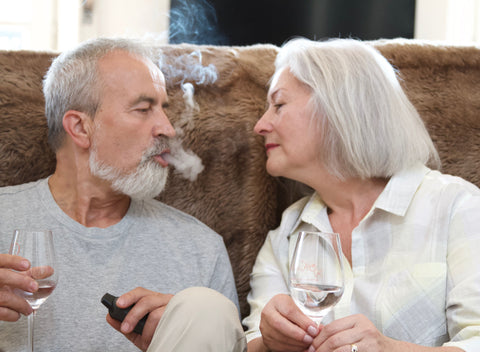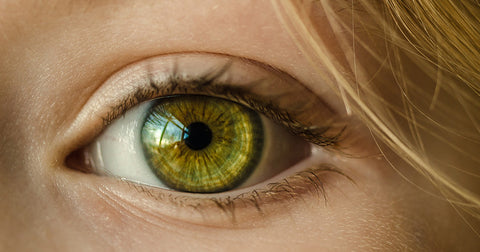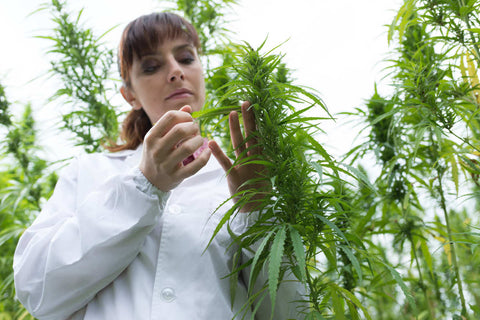What are the minor compounds of loose leaf and why are they important?

THC and CBD are among the most well-known components of loose leaf and are the headliners in the article that is the massively growing cannabis industry.
More and more people are becoming aware of the uses, effects, and benefits of THC and CBD, because of which public sentiment is growing positive after each day.
Due to this, marketing for the products has become centric to the components themselves and not for the other minor components without which many of the traits of CBD and THC would either not exist or not be as efficient or potent.
Loose Leaf has over 600 chemical components, of which around 60 to 100 are cannabinoids, which is what THC and CBD are. Most of these are found in small, trace amounts in most of the cannabis plants found in the world.
Some plants in different parts of the world have different proportions of the “minor compounds” and in turn tend to have different effects on the user, something many people are not aware of.
We’ll take a look at five of these minor compounds, how they affect a user, medicinal purposes and other interesting or cool qualities that make you go “bruh!”
Cannabinol (CBN)
CBN is one of the more interesting minor components of cannabis that we know of but not too much due to a lack of in-depth research on the compound (something something federal law).
After THC and CBD, CBN is one of the most abundant compounds in loose leaf, with its psychoactive properties up for debate (more on this later).
CBN is mostly formed/produced when THC is exposed to carbon dioxide or any form of heat (so sunlight, keeping it next to your stove or something). This doesn’t mean that there isn’t any native CBN present in loose leaf, it’s just in small amounts.
CBN, a minor compound, has been found to be effective for people with diabetes.
Aside from how it’s formed, the main benefits of CBN include an increase in appetite (people with a low appetite/cancer patients undergoing chemo rejoice!) which could help in reducing the crazy weight-loss people go through when undergoing chemotherapy.
This was tested on rats so there’s no conclusive proof that this would work on humans. What is more likely to be proven is that it is effective in helping diabetic people due to its ability to aid in insulin production. Pretty nifty if you ask us. It also helps in treating sleeplessness and muscle pain.
However, people who are currently taking medication of any kind, particularly blood thinners, should avoid taking CBN or even better, consult a doctor who will be able to guide them better.
Cannabigerol (CBG)
Cannabigerol or CBG is one of the more well known minor compounds of loose leaf. It has several interesting use cases that have unfortunately been hampered by the low yields that any hemp or cannabis plants can offer due to the low percentages of CBG found naturally in dry herb. It’s also extremely expensive because of it and there’s a disproportionate relationship between its supply and demand. Why?
CBG is considered to be one of the most expensive cannabis extracts, with costs being around $20,000 per KG of CBG extracted
Because of the long list of health problems that it tackles. Remember that scene in 21 Jump Street when the gang that get caught with weed, one of the gang members says “Well I have umm, glaucoma”?
Yeah CBG is one of the few compounds of marijuana that are as successful at treating glaucoma than some of the other compounds as CBG reduces the amount of pressure exerted by the fluids in our eyes (Intraocular pressure).
CBG also helps boost our mood, has cancer-fighting properties and is an excellent anti-bacterial. Unfortunately, it’s also ridiculously expensive to produce due to the low percentage of CBG found naturally in loose leaf. The best way to illustrate this is by looking at say, the percentage of THC.
Say you need around 10 grams of pure THC. You take cannabis plants with a THC percentage of 40%. You’d need plants that are around 25 grams to extract pure THC.
Even the equipment required to extract CBG is pretty expensive, making CBG an extremely expensive supplement/medicine for pretty much anything.

CBG helps reduce intraocular pressure in our eyes, which is beneficial for people with glaucoma. It also has mood boosting and cancer fighting properties
However, due to its increasing popularity and demand, genetically modified plants with higher percentages of CBG have been developed and despite it being wildly expensive as well, have been grown in hemptown in the US.
Similar to CBD, which too was extremely expensive in the nascent stages of its development has now become a household product that is relatively affordable. CBG will probably follow in CBDs footsteps, much like stoners when they’re told they might get free weed (it’s a lie).
Tetrahydrocannabivarin (THCV)
Tetrahydrocannabivarin or it’s easier abbreviation THCV is like a subtype of THC (hence the name). It’s more or less derived from THC, with the main difference being that its structure has a little less carbon than THC, which leads to fewer bonds between the existing molecules. Much like THC, THCV also decomposes to CBN when exposed to carbon dioxide or heat (UV Rays, sunlight, etc).
However, there’s a moniker given to THCV of being more potent than THC without giving users a case of the munchies, which is questionable because there’s a debate on whether THCV is a little psychoactive or not psychoactive at all.
How, you ask, can something be both psychoactive and not psychoactive?
Remember those archaic laws we were talking about which hinder research into pot? That along with those carbon atoms we spoke about play a massive role in how potent (or not) a high from THCV can be.

THCV is a sub-type of THC which has anti-obesity and anti-oxidant properties
Currently, consensus states that when consumed in low doses, THCV doesn’t even tickle our cannabinoid receptors, much like our buddy CBD, a non-psychoactive compound.
However, when we consume a lot of THCV, our CB1 (we have four cannabinoid receptors) go “pot? Pot. '' Why, we don’t really know because of archaic federal laws that prevent extensive research into a plant that we’ve known for millennia is pretty dope (in some instances, literally). Oh well.
THCV is an effective anti-oxidant and a CB1 agonist (meaning that our cannabinoid receptor 1 in our brain tends to get fired up when THCV enters the system).
Researchers have found it to be a possible anti obesity solution due to THCV expending more energy and reducing appetite. This sounds like something that might have side effects, however, research on this is limited.
Cannabidivarin (CBDV)
Much like THCV, Cannabidivarin or CBDV is a variation/subtype of CBD. Similar to CBD, CBDV has fewer hydrocarbons than CBD, causing fewer bonds and a slightly different structure as compared to CBD. CBDV is a barely known minor compound of dry herb.
While researchers have known about its existence for about fifty years, concrete research into CBDV is a recent phenomenon that makes its properties difficult to ascertain for sure. However, current research into the compound tells us that CBDV could be an excellent treatment option for previously “untreatable” or difficult to treat illnesses.
CBDV is an excellent anti-convulsant, which in turn makes it a great treatment option for people who have frequent seizures.
Particularly, CBDV is a viable option for the treatment of Rett’s syndrome, a mutation of the X Chromosome which mostly affects women and girls which causes frequent seizures.
It’s also helpful in treating memory defects (you know when you can SWEAR that you remember something to have happened, except everyone who was there with you goes “nah dude you’re tripping.” Yeah that) along with effective results in treating epilepsy, muscular dystrophy and even autism!

CBDV has anti-convulsant properties that help people who suffer from seizures while also being effective for people with muscular dystrophy and people with symptoms of autism
CBDV is one of the more fascinating and unknown minor compounds of loose leaf. It’s also more abundantly available in comparison to something like CBG, which makes things easier (and cheaper) in the long run. However, an important point to note is that most of these research findings are not as concrete or conclusive to sufficiently test in the real world, so take things with a grain of salt.
Conclusion
Some of the minor compounds of dry herb have some fascinating and honestly spectacular properties that can help treat some debilitating illnesses and issues which haven’t been addressed with traditional allopathic treatments. Obviously, there’s a need for in-depth research into whether these are viable in the long run, how safe they are and to even study some of the side effects that can arise with their use.
We potheads love hailing it as a miraculous cure all, but the fact of the matter is that cannabis has a significant chunk of negative effects (most of which can be negated by educating people about them) that can, on occasion, be nasty. It’s important, therefore, to stay safe but it’s more important to decriminalize loose leaf for medical testing and research on a federal level to make even bigger strides towards legalization.


